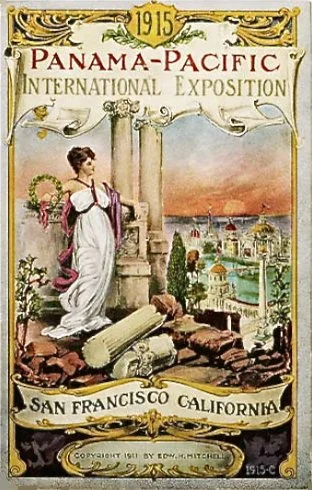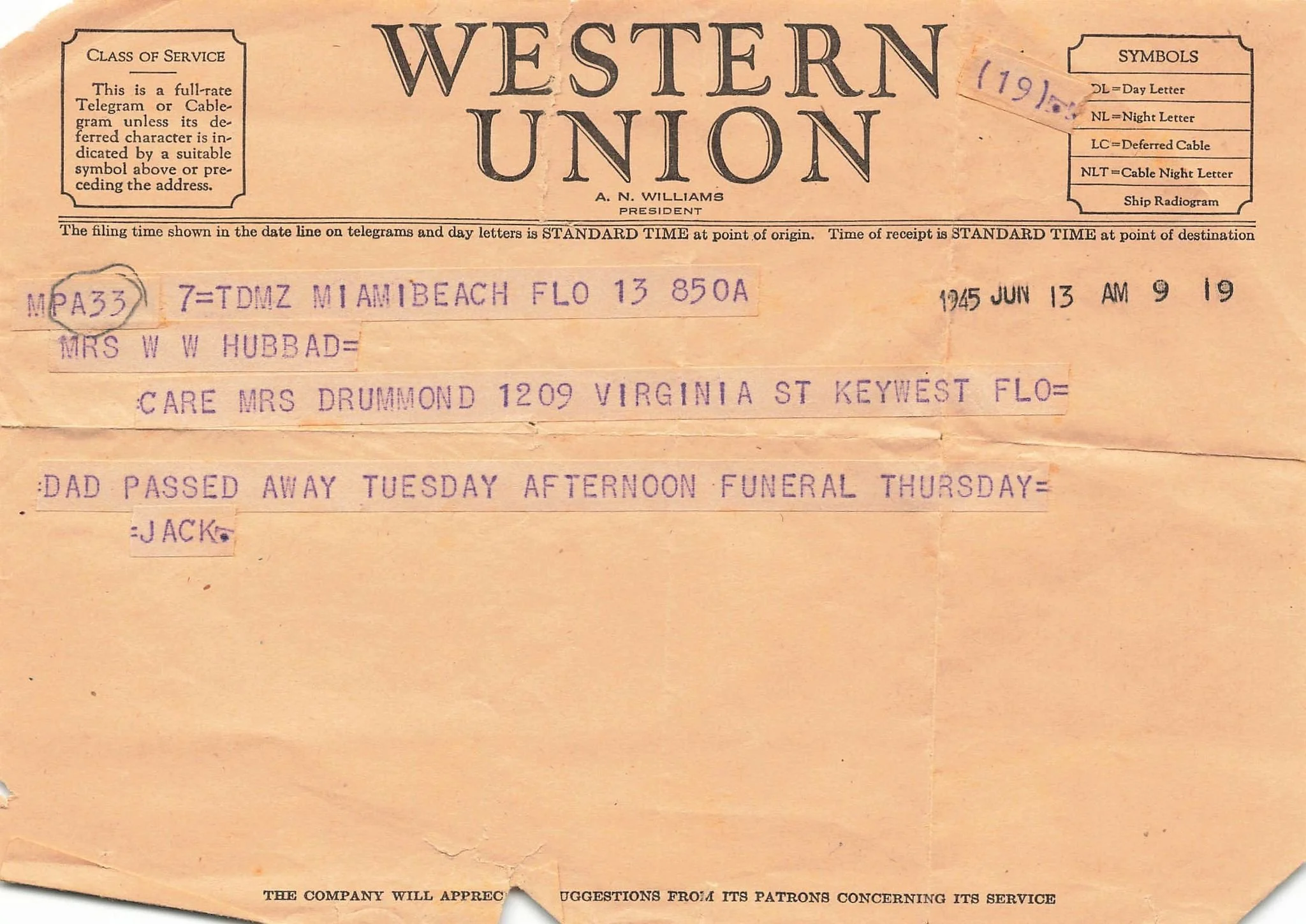1913 - My Grandfather and the Mystery of the Columbus Bones
Note: I have written a great deal about the search for my long-lost paternal grandparents, the sad Elisabetta DeFabritus and Francesco Mancini, and eventually published a book called Immigrant Secrets about the search.
In a series of new posts, I’m going to start to document another unusual family character, my maternal grandfather, John Oliver Manson. I will likely hop around a bit as I do the research, so I’ll put a date stamp in the titles so those keeping score at home can follow the timeline. Previously published:
· 1880 - Wait. My Grandfather Wasn’t Born in Australia?
· 1925 - John Oliver Manson and the Phantom Kidnapping
As anyone who has travelled to Europe knows, relics were an important element in decisions about where cathedrals were built and who paid for them. Per Wikipedia, “As holy relics attracted pilgrims and these religious tourists needed to be housed, fed, and provided with souvenirs, relics became a source of income not only for the destinations that held them, but for the abbeys, churches, and towns en route. Relics were prized as they were portable. They could be possessed, inventoried, bequeathed, stolen, counterfeited, and smuggled.”
In the absence of any real way of assessing authenticity, a lot of false claims and counter-claims arose as to what was authentic and what was not.
Forgeries proliferated from the very beginning. Augustine already denounced impostors who wandered around disguised as monks, making a profit from the sale of spurious relics. In his Admonitio Generalis of 789, Charlemagne ordered that "the false names of martyrs and the uncertain memorials of saints should not be venerated.” The Fourth Lateran Council (1215) of the Catholic Church condemned abuses such as counterfeit relics and exaggerated claims. Pieces of the True Cross were one of the most highly sought-after of such relics; many churches claimed to possess a piece of it, so many that John Calvin famously remarked that there were enough pieces of the True Cross to build a ship from. [Wikipedia]
Relics and the controversies surrounding them are not confined to religious figures. There has long been speculation about exactly what happened to the bones of Christopher Columbus.
Due to a lot of posthumous travel, the Italian explorer rests in pieces. Two sites claim to hold his remains: Seville Cathedral in Spain, and the Columbus Lighthouse at Santo Domingo in the Dominican Republic.
Columbus was buried in the Spanish city of Valladolid after dying there in 1506. His son, Diego, wasn’t satisfied with this arrangement, and had his father’s remains disinterred and sent to a monastery in Seville. There they stayed until 1542, when they were packed up and put on a boat bound for Santo Domingo in what is now the Dominican Republic. (The grand new Cathedral of Santa Maria la Menor had just been built in Santo Domingo, and it seemed a fitting location for Columbus’ remains.)
The cathedral, however, was far from Columbus’ final resting place. In 1795, when France ousted Spain from Hispaniola (the island now shared by Haiti and the Dominican Republic), Columbus’ remains were taken to Havana, Cuba. Following Cuba’s 1898 independence from Spain, Columbus ended up back in Andalusia, interred in an ornate tomb at Seville Cathedral.
If only the journey had ended there. Back in the Dominican Republic, a worker at the Cathedral of Santa Maria la Menor had discovered a box of bones marked “The illustrious and excellent man, Don Colon, Admiral of the Ocean Sea.” (“Colon” being the Spanish way of saying Columbus.) The implication of this find was that the Spanish had taken the wrong guy’s remains back to Seville and left Columbus, the “illustrious and excellent man,” in Santo Domingo. But there was a catch: Diego, Columbus’ son, was also known as Don Colon, Admiral of the Sea. Those remains could have been his—or even someone else’s, placed in the wrong box.
Undeterred by the possible case of mistaken identity, Santo Domingo built a massive, blocky cruciform “Columbus Lighthouse” to serve as the explorer’s tomb. The 688-foot-long complex opened in 1992, in commemoration of the 500th anniversary of Columbus’ 1492 voyage.
Both Seville Cathedral and the Columbus Lighthouse claim to be the keepers of the Italian explorer’s remains. Science has intervened in the argument—in 2006, DNA testing on the Seville bone fragments confirmed they belonged to Columbus. That did not, however, negate the possibility that some of Columbus is still in Santo Domingo. Administrators of the Columbus Lighthouse refuse to allow the remains they hold to be disinterred, citing respect for the dead as their reason.
--[The Remains of a Columbus Controversy That Just Won’t Die]
Not mentioned in the above chronicle of the odyssey of the Columbus bones - or in any of the numerous other articles I found – is a lost bit player. Yes, my grandfather, John Oliver Manson.
What does this have to do with my grandfather John Oliver Manson, you ask? The grandfather who claimed to have been born in Melbourne, Australia but what apparently born in Malmo, Sweden? The grandfather who engineered a fake kidnapping of his son in 1925 as part of a dispute with his wife?
On December 21, 1921, the Miami News ran an article about plans in Santo Domingo to construct a great lighthouse and tomb over the grave of Columbus.
The article acknowledged some of the above controversy about the bones of Columbus.
There is general contention as to where the authentic remains of Columbus really lie. Many authorities, especially those in Spain, maintain that the bones were removed from Santo Domingo to Havana in 1795 and then in 1898 to Seville, Spain, but other historians and experts…say that these are the remains of either Columbus’s son, Diego, or his grandson, Luis, and that a leaden casket dug up in the cathedral of Santo Domingo in 1877 containing human bones has been established through inscriptions and historical records as the coffin of the discoverer.
Not one to miss out on a bit of notoriety – or perhaps an entrepreneurial opportunity – my grandfather chimed in on the whole Columbus bones situation five days later, claiming that “in 1913 he made…the only photograph of the famous and ornate receptacle which is supposed to hold the remains of the historical character.”
My favorite part of the article – and consistent with the risk-taking gold-mining and bootlegging stories that have emerged about my grandfather (more on that in the future) – is the notation that “picture-taking is not in keeping with the rules of the country.” Never one to be kept from a good opportunity by a few pesky rules in a foreign country, the article notes, “Through the aid of a second party, however, the captain managed to divert the attention of the guard long enough to snap the coveted picture.”
Why might he have taken the risk to take the picture? Well, in 1913 there was a national controversy about the bones, triggered by the decision to send them to San Francisco for the Panama-Pacific Exposition.
I wonder whatever happened to the pictures?








